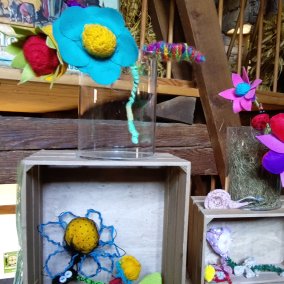The new special exhibition "The strange in the familiar" describes the phenomenon that things we think we know suddenly seem unfamiliar or even irritating. This feeling becomes particularly clear when we look at the human habitat - for example in a comparison between the former agrarian society and today's modern world.
In agrarian society, the living space was strongly influenced by nature. People mostly lived in rural structures, on farms or in small villages, in close contact with animals, plants and the rhythm of the seasons. Living and working often took place in the same place. Social contacts were limited to the immediate surroundings; family, neighbors and church formed the center of social life. The living space is manageable, familiar and can be experienced with the senses. The Agricultural Museum gives visitors an insight into these old times. The museum represents the cultural memory of the Altweiler village center.
In the new special exhibition, schoolchildren of various age groups have explored the topic of perception of one's own environment.
In agrarian society, the living space was strongly influenced by nature. People mostly lived in rural structures, on farms or in small villages, in close contact with animals, plants and the rhythm of the seasons. Living and working often took place in the same place. Social contacts were limited to the immediate surroundings; family, neighbors and church formed the center of social life. The living space is manageable, familiar and can be experienced with the senses. The Agricultural Museum gives visitors an insight into these old times. The museum represents the cultural memory of the Altweiler village center.
In the new special exhibition, schoolchildren of various age groups have explored the topic of perception of one's own environment.






